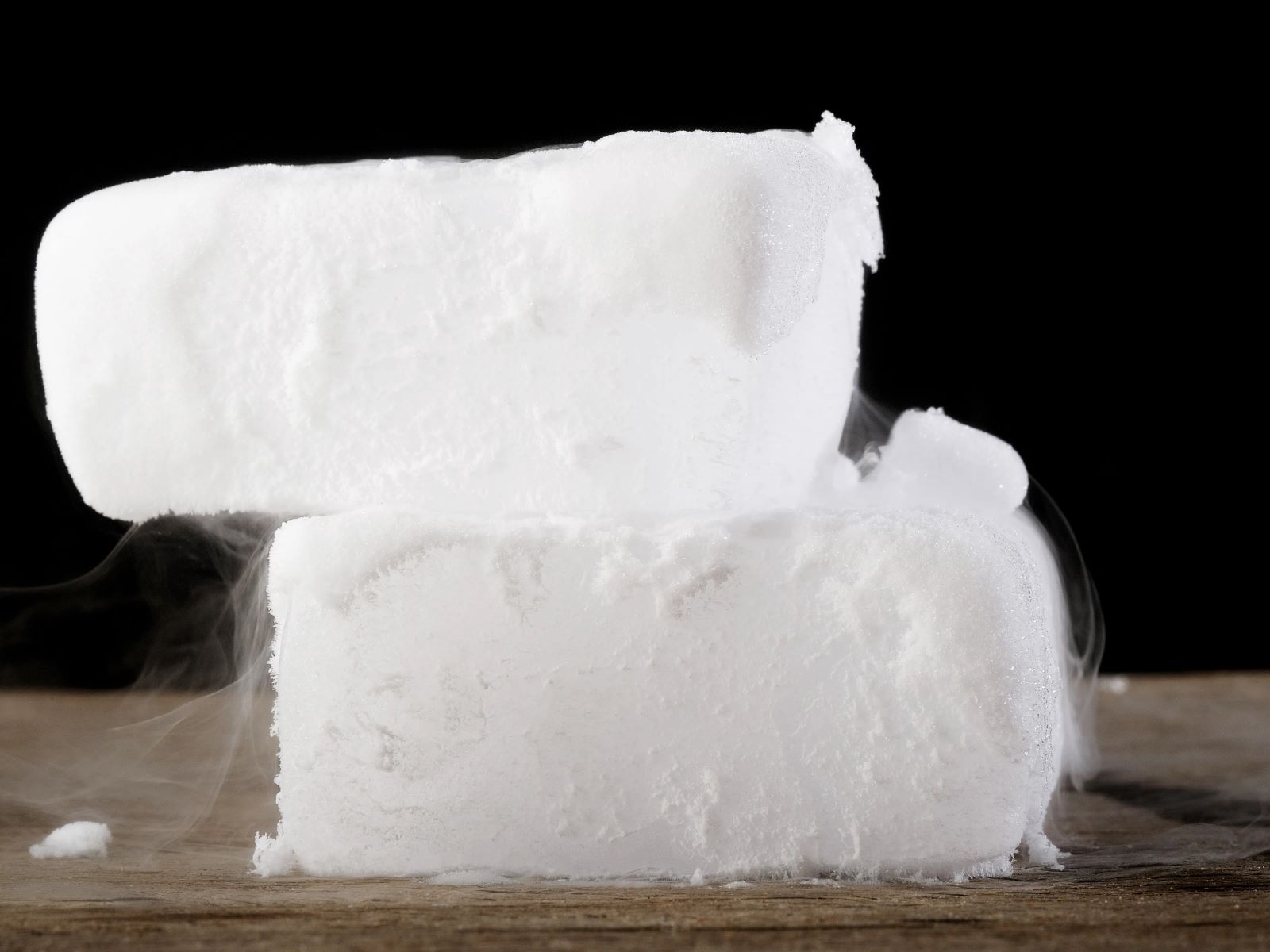
Dry ice is more than just a spooky effect for Halloween parties. Did you know it’s actually solid carbon dioxide? Unlike regular ice, it doesn’t melt into a liquid but sublimates directly into gas. This makes it perfect for keeping things cold without the mess of water. Ever wondered why it’s called “dry”? Because it leaves no moisture behind! It’s also used in cleaning, food preservation, and even special effects in movies. But be careful—it’s extremely cold and can cause burns if handled without gloves. Ready to learn more? Here are 50 fascinating facts about this chilly substance!
Key Takeaways:
- Dry ice is solid carbon dioxide that doesn’t melt but turns directly into gas. It’s super cold and has fun uses like making fizzy drinks and creating fog effects.
- Handle dry ice with care! It can cause frostbite, and the gas can displace oxygen. But it’s also used for cool experiments and in pop culture.
What is Dry Ice?
Dry ice is the solid form of carbon dioxide (CO2). Unlike regular ice, it doesn’t melt into a liquid but sublimates directly into gas. This unique property makes it useful in various applications, from food preservation to special effects.
- Dry ice is extremely cold, with a temperature of -78.5°C (-109.3°F). This makes it perfect for keeping items frozen without the mess of melting water.
- It sublimates, meaning it turns directly from a solid to a gas. This process leaves no liquid residue, making it ideal for shipping perishable goods.
- Dry ice is heavier than air. When it sublimates, the CO2 gas sinks, creating a fog effect often used in stage productions and Halloween decorations.
- It is colorless and odorless. This makes it safe for use in food and beverages, as it doesn’t alter the taste or appearance.
- Dry ice can cause severe frostbite if handled without proper protection. Always use gloves or tongs when handling it to avoid skin damage.
Uses of Dry Ice
Dry ice has a wide range of applications due to its unique properties. From industrial uses to everyday tasks, it proves to be quite versatile.
- It is commonly used in the food industry to flash-freeze food items. This process helps preserve the texture and flavor of the food.
- Dry ice is used in medical settings to transport organs and biological samples. Its extremely low temperature ensures that these items remain preserved during transit.
- It is employed in the cleaning industry for dry ice blasting. This method uses dry ice pellets to clean surfaces without leaving any residue.
- Dry ice is popular in the entertainment industry for creating fog effects. The dense CO2 gas creates a low-lying fog that adds a dramatic effect to performances.
- It is used in camping and outdoor activities to keep food and drinks cold. Unlike regular ice, it doesn’t melt, so there’s no risk of water damaging your supplies.
Fun Facts About Dry Ice
Dry ice isn’t just practical; it also has some fascinating characteristics that make it interesting to learn about.
- Dry ice can make metal objects “sing.” When a piece of metal is pressed against dry ice, it vibrates and produces a high-pitched sound.
- It can be used to carbonate beverages. By adding dry ice to a liquid, the CO2 gas dissolves, creating fizzy drinks.
- Dry ice can be used to create homemade ice cream. The rapid cooling effect of dry ice allows for quick freezing, resulting in smooth and creamy ice cream.
- It can be used to remove warts. The extreme cold of dry ice can freeze and kill the wart tissue, causing it to fall off.
- Dry ice can be used in science experiments to demonstrate sublimation and gas laws. Its unique properties make it a valuable teaching tool.
Safety Precautions with Dry Ice
While dry ice is incredibly useful, it must be handled with care to avoid accidents and injuries.
- Always store dry ice in a well-ventilated area. The CO2 gas can displace oxygen, leading to suffocation in confined spaces.
- Never store dry ice in a sealed container. As it sublimates, the gas can build up pressure and cause the container to explode.
- Use insulated gloves or tongs when handling dry ice. Direct contact with skin can cause severe frostbite.
- Keep dry ice away from children and pets. Its extreme cold and potential hazards make it unsafe for unsupervised handling.
- Dispose of dry ice properly by allowing it to sublimate in a well-ventilated area. Never dispose of it in a sink or toilet, as it can cause damage to plumbing.
Environmental Impact of Dry Ice
Dry ice has both positive and negative effects on the environment, depending on how it is used and disposed of.
- Dry ice is made from recycled CO2. This means it doesn’t contribute to the overall increase of CO2 in the atmosphere.
- It can be used to reduce the use of chemical refrigerants. Dry ice provides an eco-friendly alternative for cooling and freezing applications.
- Improper disposal of dry ice can harm the environment. Releasing large amounts of CO2 gas in confined spaces can contribute to air pollution.
- It can be used in agriculture to control pests. Dry ice can create a CO2-rich environment that suffocates pests without the need for harmful chemicals.
- Dry ice can be used in environmental cleanups. Its ability to sublimate makes it useful for removing contaminants without leaving residue.
Historical Facts About Dry Ice
Dry ice has an interesting history that dates back to its discovery and early uses.
- Dry ice was first observed in 1835 by French chemist Charles Thilorier. He noted the formation of solid CO2 when opening a container of liquid CO2.
- The term “dry ice” was coined in 1925 by the DryIce Corporation of America. They began marketing it as a cooling agent for shipping and refrigeration.
- During World War II, dry ice was used to preserve blood and medical supplies. Its ability to keep items frozen without melting made it invaluable in the field.
- In the 1950s, dry ice became popular in the entertainment industry. Its fog effects were used in movies and theater productions to create eerie atmospheres.
- Dry ice has been used in space exploration. NASA has used it in various experiments to simulate the conditions on Mars and other planets.
Scientific Facts About Dry Ice
Understanding the science behind dry ice can help appreciate its unique properties and applications.
- Dry ice is solid CO2, which is a naturally occurring gas in Earth’s atmosphere. It is produced by compressing and cooling CO2 gas until it solidifies.
- The sublimation point of dry ice is -78.5°C (-109.3°F). This means it transitions directly from a solid to a gas at this temperature.
- Dry ice is denser than water. A piece of dry ice will sink when placed in water, unlike regular ice which floats.
- The gas produced by dry ice sublimation is heavier than air. This causes it to stay close to the ground, creating a fog effect.
- Dry ice can be used to demonstrate the Leidenfrost effect. When placed on a hot surface, it forms a layer of gas that allows it to “hover” and move around.
Practical Tips for Using Dry Ice
Knowing how to use dry ice effectively can make tasks easier and safer.
- To keep food frozen, place dry ice on top of the items. Cold air sinks, so this ensures even cooling.
- Use dry ice in a cooler with ventilation. This allows the CO2 gas to escape, preventing pressure buildup.
- To create a fog effect, place dry ice in hot water. The heat speeds up sublimation, producing thick fog.
- For homemade ice cream, mix dry ice pellets into the ice cream base. The rapid cooling will freeze it quickly, resulting in a smooth texture.
- Use dry ice to remove dents from cars. Place a piece of dry ice on the dent, and the rapid cooling will cause the metal to contract and pop the dent out.
Interesting Experiments with Dry Ice
Dry ice can be used in various experiments that are both educational and fun.
- Create a dry ice bubble. Place a piece of dry ice in soapy water, and the CO2 gas will form a bubble that grows until it pops.
- Make a dry ice rocket. Place a small piece of dry ice in a film canister with water, seal it, and watch it launch as the gas builds up pressure.
- Demonstrate the density of CO2 gas. Pour the gas from a container of dry ice into a candle flame, and watch the flame go out as the CO2 displaces the oxygen.
- Create a dry ice crystal ball. Place dry ice in a bowl of water, cover it with a cloth, and blow bubbles onto the cloth to form a crystal ball effect.
- Use dry ice to inflate a balloon. Place a piece of dry ice in a balloon, tie it off, and watch it expand as the dry ice sublimates.
Fun Facts About Dry Ice in Pop Culture
Dry ice has made its way into various aspects of pop culture, adding to its mystique.
- Dry ice is often used in magic shows. Its fog effects create an air of mystery and enhance illusions.
- It has been featured in numerous movies. Classic horror films often use dry ice to create spooky fog effects.
- Dry ice is used in theme parks. Attractions and haunted houses use it to create immersive environments.
- Musicians use dry ice in concerts. The fog effects add to the visual spectacle of live performances.
- Dry ice has even been used in video games. Some games feature levels or scenes with dry ice fog to create atmospheric effects.
The Cool Truth About Dry Ice
Dry ice isn’t just for spooky effects at Halloween parties. It’s solid carbon dioxide, and it sublimates directly from a solid to a gas at -78.5°C (-109.3°F). This makes it perfect for keeping things cold without leaving a wet mess. It’s used in shipping perishable goods, creating fog effects, and even in industrial cleaning.
Handling dry ice requires caution. Always use gloves or tongs to avoid frostbite. Never store it in airtight containers, as the gas buildup can cause explosions. Ventilated areas are a must to prevent carbon dioxide buildup, which can be dangerous.
From preserving food to creating special effects, dry ice has a variety of uses. Knowing these facts can help you use it safely and effectively. So next time you see that eerie fog, you’ll know the science behind the spectacle.
Frequently Asked Questions
Was this page helpful?
Our commitment to delivering trustworthy and engaging content is at the heart of what we do. Each fact on our site is contributed by real users like you, bringing a wealth of diverse insights and information. To ensure the highest standards of accuracy and reliability, our dedicated editors meticulously review each submission. This process guarantees that the facts we share are not only fascinating but also credible. Trust in our commitment to quality and authenticity as you explore and learn with us.


